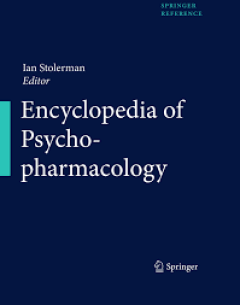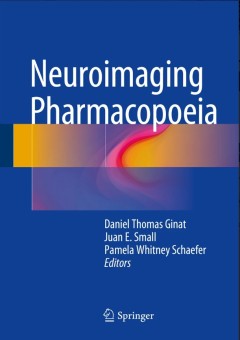Filter by

Environmental Influences on the Immune System
This book brings together articles on the overarching theme of how the environment shapes the immune system. The immune system is commonly assumed to respond to harmful pathogens such as bacteria and viruses. However, harmless bacteria, chemicals, stress, normal food and other factors can also trigger, shape or interfere with the immune system, often producing adverse effects. Yet, it is als…
- Edition
- -
- ISBN/ISSN
- 978-3-7091-1890-0
- Collation
- 17 b/w illustrations, 7 illustrations in colour
- Series Title
- -
- Call Number
- -

Environmental Epigenetics
This book examines the toxicological and health implications of environmental epigenetics and provides knowledge through an interdisciplinary approach. Included in this volume are chapters outlining various environmental risk factors such as phthalates and dietary components, life states such as pregnancy and ageing, hormonal and metabolic considerations and specific disease risks such as cance…
- Edition
- -
- ISBN/ISSN
- 978-1-4471-6678-8
- Collation
- 5 b/w illustrations, 33 illustrations in colour
- Series Title
- -
- Call Number
- -

Environmental Determinants of Human Health
Polluted air and contaminated food and water are major causes of human health deterioration, but public health policy has long struggled to effectively address these concerns. This timely book--written for a wide audience of policy makers, researchers, and general readers--synthesizes what we already know about environmental hazards, identifies the gaps in our knowledge, and provides a roadmap …
- Edition
- -
- ISBN/ISSN
- 978-3-319-43142-0
- Collation
- 17 b/w illustrations, 15 illustrations in colour
- Series Title
- -
- Call Number
- -

A Case Approach to Perioperative Drug-Drug Interactions
The occurrence of deleterious or even fatal drug-drug interactions (DDIs) in the perioperative period is no longer a theoretical concern but a harrowing reality. A Case Approach to Perioperative Drug-Drug Interactions addresses the complex realm of pharmacokinetic drug interactions in an easy-to-read volume that functions as both a comprehensive clinical reference and a casebook. The book pres…
- Edition
- Ed. 1,
- ISBN/ISSN
- 978-1-4614-7494-4
- Collation
- -
- Series Title
- -
- Call Number
- 617.96 CAS c

Endogenous ADP-Ribosylation
This volume gathers the latest exciting findings on ADP-ribosylation from renowned experts in the field. It includes ten chapters, organized into the following three thematic sections: · Evolution and detection of endogenous ADP-ribosylation · ADP-ribosylation by the ARTC family of ADP-ribosyltransferases (R-S-E ARTs) · ADP-ribosylation by the ARTD family of ADP-ribosyltransfe…
- Edition
- -
- ISBN/ISSN
- 978-3-319-10771-4
- Collation
- VIII, 213
- Series Title
- -
- Call Number
- -

Endocannabinoids
There is currently considerable interest in the development of medicines that would enhance endocannabinoid-induced “autoprotection”, for example through inhibition of endocannabinoid metabolizing enzymes or cellular uptake processes or that would oppose endocannabinoid-induced “autoimpairment”. This volume describes the physiology, pathophysiology and pharmacology of the endocannabinoi…
- Edition
- -
- ISBN/ISSN
- 978-3-319-20825-1
- Collation
- XII, 475
- Series Title
- -
- Call Number
- -

Encyclopedia of Psychopharmacology
Psychopharmacology is the study of the effects of psychoactive drugs on the functioning of the central nervous system at all levels of analysis, thus embracing cognition, behavior, psychological states, neurophysiology, neurochemistry, gene expression, and molecular biology. It includes, as an integral part of its domain, the interaction of environmental and genetic factors with psychoactive dr…
- Edition
- -
- ISBN/ISSN
- 978-3-642-36172-2
- Collation
- 125 b/w illustrations, 91 illustrations in colour
- Series Title
- -
- Call Number
- -

Encyclopedia of Immunotoxicology
This work provides rapid access to focused information on topics of Immunotoxicology not only for scientists and those dealing with laboratory aspects but also for lecturers and advanced students. Over 200 contributing authors - including many of the world's top specialists - have contributed full essays on all relevant topics, supplemented by keyword definitions of related terms. Full essays a…
- Edition
- -
- ISBN/ISSN
- 978-3-642-54596-2
- Collation
- in 2 volumes, not available separately
- Series Title
- -
- Call Number
- -

Neurotransmitter Interactions and Cognitive Function
A host of neurotransmitters and neuroactive substances underlies respiratory regulation in health and disease. The centerpiece of investigations regarding adaptation to hypoxia and sensorial perception has been the dopaminergic system. It is now clear that a complex interaction among various neuroactive substances, rather than a single one, forms the basis of respiratory changes. The research o…
- Edition
- 1
- ISBN/ISSN
- 978-3-319-10005-0
- Collation
- IX, 67
- Series Title
- Advances in Experimental Medicine and Biology
- Call Number
- -

Neuroimaging Pharmacopoeia
This book reviews the imaging features associated with selected classes of pharmaceuticals and drugs on brain, head and neck, and spine and explains the implications of the imaging findings for the neuroradiologist and the clinician. Some agents produce characteristic abnormalities with distinctive imaging features, while others have a spectrum of manifestations on imaging. Still further agents…
- Edition
- 1
- ISBN/ISSN
- 978-3-319-34362-4
- Collation
- XVIII, 382
- Series Title
- -
- Call Number
- -
 Computer Science, Information & General Works
Computer Science, Information & General Works  Philosophy & Psychology
Philosophy & Psychology  Religion
Religion  Social Sciences
Social Sciences  Language
Language  Pure Science
Pure Science  Applied Sciences
Applied Sciences  Art & Recreation
Art & Recreation  Literature
Literature  History & Geography
History & Geography